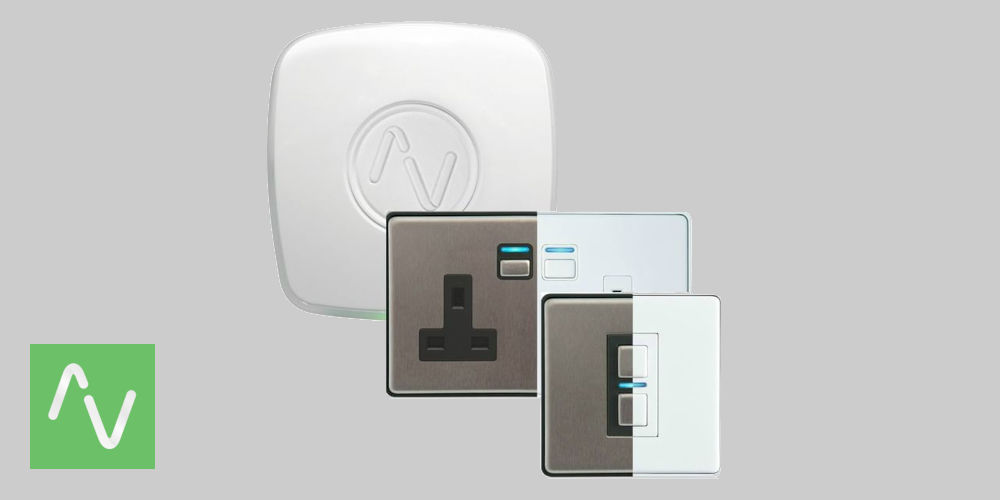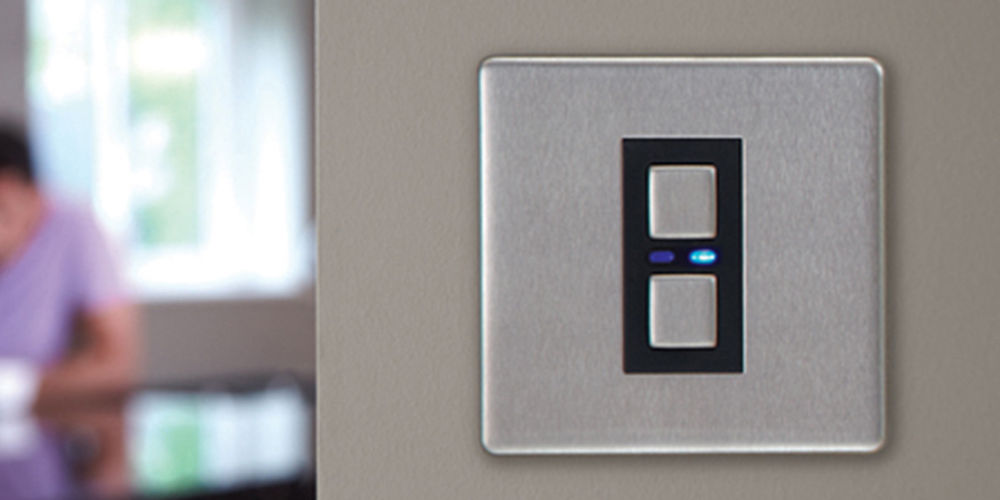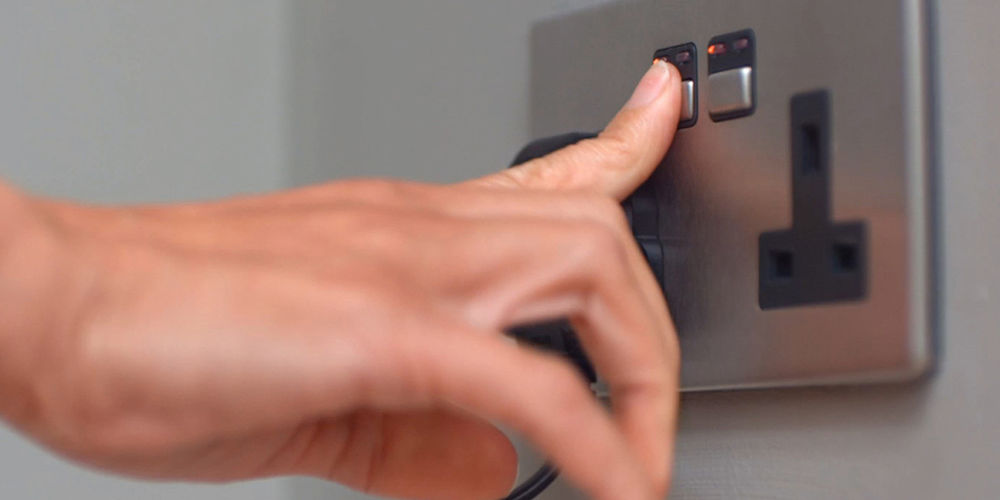Lightwave starter kit review: The best starting point?

If you’re exploring building a smart home but don’t know where to start, the Lightwave starter kit might be ideal. Comprised of a Link Plus Hub, a Smart Series Dimmer and a Smart Series Socket, it contains everything you need to add some basic automation to your home.
If you’re new to Lightwave home automation, you’ll be glad to know that it’s an affordable and superb entry-level system designed in Birmingham for the British market.
The system is fantastic for controlling your home’s lights, power, heating, and blinds. Plus, it works with Amazon Alexa, Google Assistant and the Apple HomeKit.
Come with us as we examine the Lightwave starter kit and ask if it’s the right place to begin your home automation journey.
Pros
- Great introduction to home automation
- Easy to set up and programme
- British design
Cons
- Requires good DIY skills
- Basic system
Why we love the design aesthetic of Lightwave
Unlike some home automation products that look clunky or ugly, Lightwave has heavily invested in designing aesthetically pleasing devices. The starter kit is available in a polished silver or white finish, allowing you to pick the best option for your home.
The kit consists of the Link Plus Hub, a single gang Smart Series Dimmer, and a dual gang Smart Series Socket. All three are standard products you can buy anywhere, not some lite version.
The Link Plus LP2 hub looks like a Wi-Fi router but is the system’s brain. While made from durable plastic, it’s built to last. As the brains of the system, the hub is essential.
Both the dimmer and socket are made up of two parts. They have a faceplate that sits on top of the technology element. This part uses a plastic surround and screws into the wall. The faceplate then slots on top hiding the screws.
Due to their retrofittable design, you do need a good level of DIY skills. You need to remove the old socket or light switch and replace them with the Lightwave version. Thankfully, the manuals are easy to follow. You could instead hire an electrician.

photo by Lightwave
What features can we control with the starter kit?
You can experiment with basic home automation without breaking the bank. Of course, the Lightwave starter kit only comes with two devices, which limits what you can achieve. However, it is a superb starting point.
The Link Plus hub is at the heart of any Lightwave smart home system. As the brain, this device sends and receives messages from the linked devices, your smartphone, voice assistant and the online portal. Without it, the system can’t function.
For example, you change the main light switch in your lounge with the Lightwave smart dimmer. After pairing it with the hub, you can switch your lights on or off and, if possible, dim them.
You can control your lights using the switch, a smartphone app, or Alexa/Google Assistant. If you decide to use the app, you don’t need to move from the sofa. Plus, as the system uses Wi-Fi, you don’t need to be at home to operate your lights as the app works anywhere.
It’s the same basic idea for the power socket. Simply change your existing one for the Lightwave smart socket, pair it with the hub, and you can operate it from anywhere.
As you become more comfortable using the two included devices, you can consider expanding the system so it controls the entire room. You could start to roll the technology out across your home, allowing you to control lights and power in each room using the app or a voice command.
Another option is to add the Lightwave heating system or use their smart relay devices to control blinds, gates or the garage door. Even for an entry-level home automation system, it’s very powerful.
How to configure your system for the first time
Getting set up is trickier than with other systems, as you need to do some rewiring. The Link Plus is the easiest to install as it plugs directly into your Wi-Fi router and a power socket. For the system to work, you must always have your router and Link Plus turned on.
With the hub plugged in and switched on, we can install the devices. Unlike plug-in-and-play devices that turn your existing plugs into smart devices in a second, Lightwave uses a different method.
Lightwave has designed retrofittable devices that are easy to swap for your existing fittings. The downside is that you have to do some rewiring or pay an electrician. However, the upside is that these devices look very attractive and don’t stand out.
After swapping a light switch and power socket for the Lightwave version, you must pair the devices with the hub. The Lightwave app will guide you, ensuring you can control the new device.
Linking the dimmer with the hub
- Using the Lightwave App, select ‘add device’, and follow the in-app instructions.
- On the Dimmer, press and hold down one pair of ‘on’ and ‘off’ buttons until the LED flashes blue and red alternately, then release it. The Dimmer is now in linking mode.
- The LED on the Dimmer will flash blue to confirm that it is linked to the App.
To link the Power Socket with the hub
- Using the Lightwave App, select ‘add device’, and follow the in-app instructions.
- On the Socket, press and hold down either ‘on’ / ‘off’ button until the LED flashes blue and red alternately, then release it. The Socket is now in linking mode.
- The LED on the Socket will flash blue to confirm that it is linked to the App.
As you can see, adding devices is quite simple. So, you can quickly scale the Lightwave system within your home. After adding a few devices, the process becomes second nature.

photo by Lightwave
Is the system easy to use?
There is a learning curve, and you might have to resist the urge to leave the sofa to turn on the pendant light! However, after embracing the Lightwave starter kit, you’ll quickly realise how powerful the system is.
Lightwave works best in modern homes with thin walls, as the technology uses a low powered protocol to send and receive commands wirelessly. It doesn’t work very well in older properties with thick walls. You need a strong, stable high-speed internet connection for the best performance.
After using the system for a little while, it’s worth experimenting with building scenes, combining Lightwave and IFTTT to control more devices or controlling the system with Alexa/Google Assistant/Siri. As you try different control options, you can find your best option.
Overall, the second-generation devices are very stable, easy to integrate and dependable. It seems Lightwave has improved its quality since the first-generation devices.
Is the Lightwave starter kit worth buying?
While it only offers a small discount over buying the devices individually, if you’re looking for a solid yet basic home automation system, it’s worth investing in a Lightwave starter kit and the system in general.
The Lightwave starter kit we reviewed contains a hub, dimmer and power socket, allowing you to experience the system. These devices are the standard retail products and not a slimmed-down version for the starter pack.
So, you can easily add more devices as you feel comfortable and continue to build your dream smart home. Overall, Lightwave isn’t the most feature-rich smart home system. That said, it’s a fantastic starting point to explore home automation.




